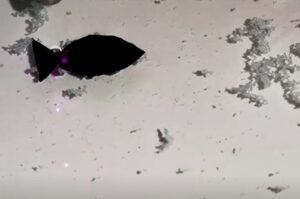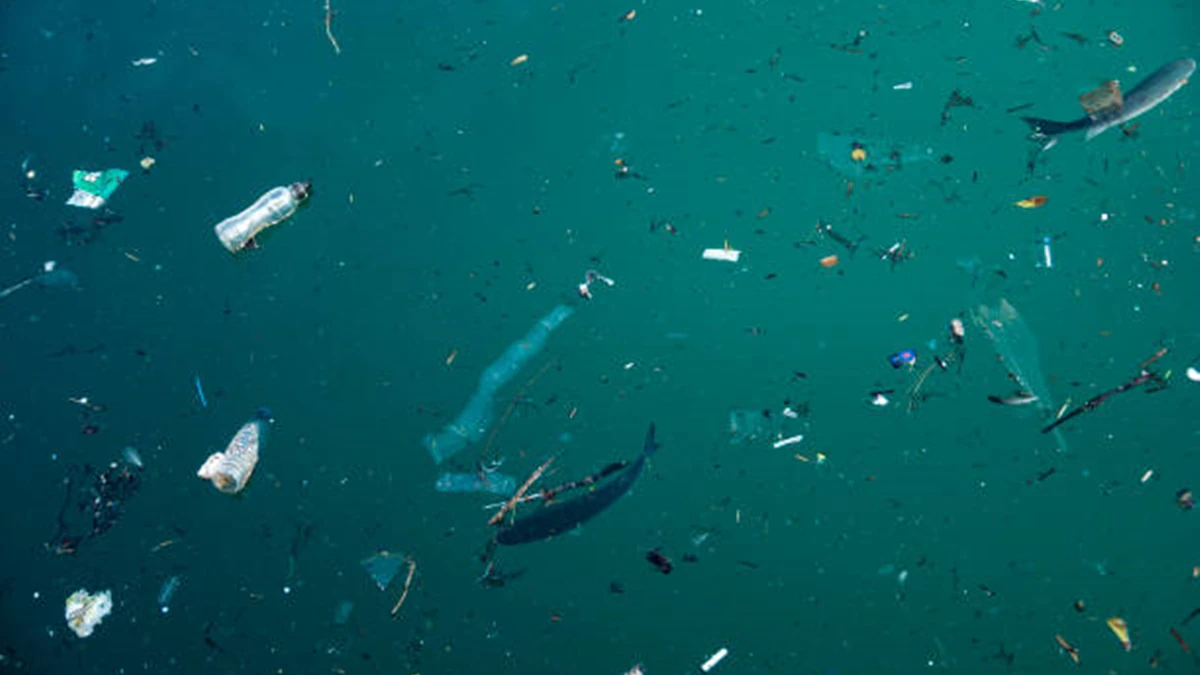Introduction
The Microplastic Menace:
The microplastics pose a concern of grave danger to the marine fauna. They might be mistaken for food by fish and shellfish, and they may end up in the food chain. It is even possible for them to accumulate in higher vertebrates like humans who consume marine species. Besides, microplastics might be capable to retain harmful toxins that are dangerous for the marine ecosystems. Similarly, microplastics may also convey those toxins and release them when they break apart.

Robo-Fish on the Rise: One of the Topics: What’s Fresh?
The Rise of the Robo-Fish
Sichuan University in China have just recently invented tiny robotic fish, which are 1.3 centimeters (half an inch) long to provide assistance to fish farms in nature preservation. These soft, biocompatible mini-miracles are made with material inspired by nature’s nacre (the silvery-iridescent inner layer of seashells). They are aimed to sail around the aquatic world in a tame manner.
How the Robo-Fish Gobble:
The ‘secret sauce’ of this technology is the material used in fish. This device features a built in mechanism that enables it to draw and hold microplastics once it comes into contact with them via either chemical processes or electrical forces. Fish consuming the microplastic ingested will effectively retain it in their body.
Such robo-fishes are not just simple passerby in the water; they can have themselves as a motion! The researchers apply near-field red light to regulate the fish’s tail fin. This causes them to move way fast – 2.76 times their body length per second. It endows them the capability to do that intentionally. They take in microplastics in the very process.
FAQ
Q: Will they be mass producible and marketed?
A: At the moment these fish robots are in the study-and -develop stage. Although the current situation is impressive, subsequent scrutiny should be employed as the initial findings do not necessarily determine the full capacity of AI. Hence more research is needed to further develop their abilities and assure mass deployment is possible.
Q: Are these electronic fish able to do deep sea cleaning of all the microplastics found in the oceans?
A: This Robo-fish solution no doubt is effective but what is even a more plausible measure is to forget about this Microplastics problem by the Robo-fish. The core thing is to solve the problem that we give so much chance to use one-time plastic. But, Robo-fish along with other tactics such as better waste management and plastics alternatives promote recycling by fishing out the plastics and tones of pollution in our Oceans.
Q: Are the Robo-fishes with those abilities going to cause any harm to the fish and other sea life living there?
A: By applying biocompatible materials in their creation, it is ensured that the risk of such setbacks is minimized. Conversely, quite enough investigation must be done in order to guarantee that there is no long term effects of marine ecosystems by these devices.
Expert Tips for a no-Plastic Future
Reduce:
Disapprove them! A single-use plastic like straw, bag, and cutlery should be thrown away. These plastics must be prohibited as soon as possible.
Instead of the disposable options, like shopping bags and water bottles, try to the reusable alternatives.
Reuse:
Upcycle old plastic containers by using them as a storage or turning them into attractive handicrafts that will really impress your friends.
Recycle:
Be aware that different communities have different recycling rules and it is important to closely follow your local recycling guidelines when applying to recycling plastic items.
Spread Awareness:
Have a conversation with your friends and your loved ones about plastic pollution risks.
Support NGOs which are actively subscribing to clean oceans and produce sustainable solutions.
Advocate for Change:
Encourage your influential leaders to vote for a policy that supports enacting legislation which affects their constituents.
Conclusion: Plastic-free future? A future without microplastics
Though technologies indeed contribute to finding the solution but it is to be underscored that technology alone cannot solve this crisis. To play our part, which is highly significant, we have the individual responsibility of doing the right things also the right thing. Through mindful plastic consumption and championing for the fly we can make beingaches and marine life as healthy as they used to be and not a distant memory.




